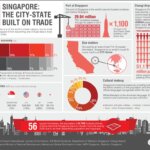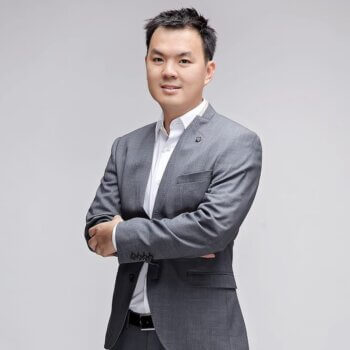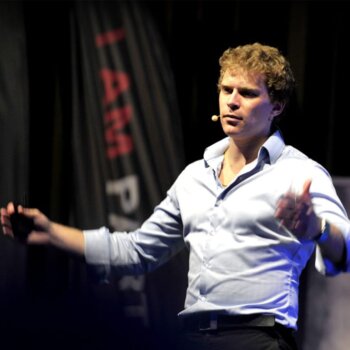After completing his B.E. (Bachelors of Engineering) from Delhi College of Engineering, Delhi, India, Amol Arora pursued his MBA from the University of California, Irvine Campus, USA, where he was offered a faculty scholarship with an assistantship. Stemming from this, Amol became a Post Graduate/Doctoral Researcher in Educational Leadership & Management from the University of Nottingham, UK.
Before settling down on his career of choice – Education, Amol worked in a number of leading corporates in India and Abroad. He has been leading the SHEMROCK & SHEMFORD Group of Schools, which today, has matured to become one of India’s Leading School Chains with over 500 Preschools and Senior School branches in India & abroad and with over 3,00,000 alumni. He has also been associated with Delhi Public School Pinjore (a Day cum Residential Boarding School), for the past 13 years, as a Member of Managing Committee.
Over the years of his professional journey in the sector of Education, Amol has always strived to keep himself abreast with the latest trends & technology of the field. He has always tried to introduce new, innovative ideas & pioneering concepts with the view to integrate all these, into School Education. He has worked hard to build & upkeep the SHEMROCK brand and make it reach its full potential, using its franchise model. He ensured that same philosophy of stress-free and fun-filled learning has transferred to the SHEMFORD Futuristic Schools, the Senior (K-12) School Chain of SHEMROCK.
In your own words what is SHEMROCK and SHEMFORD Group?
SHEMROCK is India’s 1st Playschool Chain, which revolutionized the concept of early childhood education since 1989, by pioneering a vibrant and child-friendly system of learning. Today, with more than 3,00,000 children having passed the colourful corridors of its 400+ branches, SHEMROCK, the Award Winning School Chain, is a leader in preschool education with a unique concept that focuses on playful learning.
SHEMFORD Futuristic Schools is the Senior School Chain of SHEMROCK which aims to provide the same quality of learning & friendly atmosphere, where children run to school not because they ‘have’ to, but because they ‘want’ to. SHEMFORD has 100+ branches spread across the length and breadth of the country, which offer both CBSE and ICSE board curriculum.
How did you come up with the idea of SHEMROCK and SHEMFORD Group?
“Necessity is the mother of Invention” – they say; and this saying very aptly describes – how we came up with the idea of opening SHEMROCK and then eventually, SHEMFORD. My parents, who are eminent educationists, Dr. Mrs. Bimla Arora (our Founder & Director) and Dr. Mr. D. R. Arora (our Chairman) were looking for a good pre-school for my sister. However, they could not find a preschool which met their expectations.
Therefore, based on their 30 years of academic experience in India and abroad, they started a model pre-school with a child-friendly environment. The first play school was opened in 1989 in New Delhi, which laid the bedrock for our Group of Preschools across India and abroad. Later, we felt that there was a strong need to provide the same environment of stress-free and all-inclusive education to K-12 grade students, which is why we started our Chain of Senior Schools, in the year 2009.
Could you walk us through the process of starting up SHEMROCK and SHEMFORD Group?
After the success of the first SHEMROCK School, we opened a second branch. The second preschool also did well. Children started coming from far off places. The system that our family created was working wonders and parents were satisfied with the quality of education we were providing. People wanted to replicate our style of imparting a stress-free learning experience in their schools, as well.
However, there were limitations on how much capital and real estate we could invest in. So in 1992 when we learnt about the concept of franchising, we thought it was the right model through which we could expand and reach a wider audience. This gave birth to the process of formation of the SHEMROCK Chain and our big family of more than 500 franchises.
Since the model had proven successful in our pre-schools, we used same model to grow our 10+2 school brand and extended the same vision of making learning interesting, interactive and engaging to formal schooling as well.
Did you encounter any particular difficulties during startup and if so, how did you guys overcome it?
Being pioneers in the preschool sector, we did not have a ready model before us that we could replicate. We had to learn as we went along. We had to design better systems so that same problems and issues did not crop up over and over.
With our unique systems and technology-driven innovations like ShemEduMaxTM – our inhouse, research-based school system & curriculum, ShemFAST – Shem Families and Schools Together”, our user-friendly, web-based software which acts as an important bridge between the home & the school so that parents and teachers (mentors/facilitators) can communicate regularly, and also, our informative, elaborate training programmes ShemWebinar (online training), ShemDisha (complete training for the franchisees), ShemEmpower (annual teacher’s training), etc., we found our answers and ensured that each child in all our schools received the best possible education.
How have you been developing SHEMROCK and SHEMFORD Group since startup?
For the first 10 years, we restricted our presence to Delhi and the National Capital Region. Gradually, we started receiving franchising demands from smaller towns and cities. It was only in the late nineties that we started venturing outside our core territory. In the year 2009, we had a total of 90 branches, more than half of which were only in the Delhi –NCR region. By then, we had analyzed the working of our model outside Delhi also, and realized that it did well and was running successfully. With our model now proven, the company shifted direction and decided to go on for a nation-wide growth.
Today we are launching more than 2 SHEMROCK Preschools per week and in the short period of 5 years we have grown from 90 to over 400 schools, with a growth of around 4.5 times.
Simultaneously, SHEMFORD, our K-12 Schools have grown from 2 in 2009 to over 100 schools today. This remarkable growth was noticed by Limca Book and they honoured our schools with the title of “Most Schools Launched in Shortest Time”.
Going into the future, we hope to continue & further increase the growth rate. We have already entered Nepal & Bangladesh and in the coming five years, alongside growing all across India, we hope to establish ourselves in South-East Asia and in the Gulf. Technology is also going to play a bigger role and we hope that we continue to be known for the integration of technology in our schools.
What kind of feedback did you get for SHEMROCK and SHEMFORD Group so far?
Our Group has always aimed to create and support a strong Parent-School Partnership and value their feedback about our schools and education system the most. I can proudly say that almost all our parents have appreciated our efforts, specifically the conduct & friendly nature of our teachers, the quality & depth of our curriculum, friendly & encouraging atmosphere in our classrooms and also the regular activities & celebrations that we organise for our students.
Do you face a lot of competition in this industry? What is your strategy against your competition?
The education industry is a sector with a large market and with no barriers to entry. So there are numerous players in this sector and quite, of course, there is a lot of competition.
We seek high satisfaction among parents. After 25 years, majority of our admissions still happen by word of mouth. We ensure the highest standards of imparting education. This approach to quality has ensured our growth, year after year, even after 25 years.
Have you developed any industry insights that you could share?
The Education Industry in India has undergone some major progressions over the past decade. High population densities, better per capita incomes and low literacy rate are some key factors that have contributed to the growth of this sector. Apart from the formal K-12 (Kindergarten-12th grade) schools & higher education institutions, countless non-formal play schools, coaching institutions, tuition centers, multi-media & ICT (Information Communication Technologies) providers and educational books & aids suppliers have sprouted up.
As per a research conducted in 2013, by a Delhi-NCR based Research house, Gyan Research and Analytics Pvt. Ltd., the pre-school market in India, which is dominated by the private sector, was at USD 1.03 billion in 2012 and is estimated to reach USD 5 billion in 2017. While, the K12 market, which is primarily dominated by the public sector (accounting for more than 75 percent of schools in India.) was valued at USD 34 billion in 2012 and is expected to reach USD 66 billion in 2017.
The Indian education sector is expected to have exponential growth in the next five years with further rise in expenditure on education and growing investments from the corporate to cater to a larger population looking for quality education.
What is the future of the industry and how do you plan to stay relevant in this industry?
The future of the industry, as I see it is: As the various players grow, there will be consolidation. Only and only the ones with quality offerings will survive. Rest of them will either be acquired by larger players or shut down. We plan to stay relevant in the industry by focusing on Research & Development and investing in the Process to ensure each student, who gets enrolled in our School, gets the best possible education.
Was there anything that disappointed you initially?
The condition of the playschools in our country and the kind of education imparted to our children, at that time was something which really disappointed me. Also, the low availability of qualified & skilled teachers and high costs of real estate (which continue to be the same, even today) were not conducive for maintaining quality while growing but we found innovative methods to overcome these challenges.
What do you think about being an entrepreneur in Asia?
Being an entrepreneur in Asia is definitely different from being one in the West, primarily because there are a number of steps & bureaucratic processes involved.
In the West, there is a single window approval system for many requirements. While here, things are time consuming and bureaucracy is evidently far more. However, once given the start, in many areas there is more room for flexibility in Asia and innovative entrepreneurs can tweak their models and continue to grow. Whereas, in the West, entrepreneurs are bound by rules & regulations and they are allowed limited innovation.
In Asia, there is a lack of awareness about interpretation & implementation of the IP laws, therefore a large number of copy cats tend to emerge and crowd up the market.
What is your definition of success?
For me, success is something that is felt internally and not something that is externally pointed out by others. People may be billionaires, yet they might not feel satisfied. If one can look back in life being proud and feeling content, I’d say that person is successful.
Why did you decide to become an entrepreneur?
Right from early schooling, I enjoy taking the leadership positions and therefore, decided to lead my own organization rather than progressing as an employee in another’s. As years went by, I have thrived through the ups & downs of the journey and really enjoyed the ride.
In your opinion, what are the keys to entrepreneurial success?
The key to entrepreneurial success, I think is to be able to think long term and short term simultaneously. A good leader has to be strategic in his approach and have the qualities & skills of a visionary leader while ensuring smooth functioning on a day-to-day basis.
Any parting words of wisdom for entrepreneurs out there from your personal experience?
“Entrepreneurship is Living a few years of your life like most people won’t, so that you can spend the rest of your life like most people can’t.” I think this famous quote makes perfect sense as the very first steps of entrepreneurship are always the hardest, but one should not forget that the rewards of entrepreneurship are themselves very enriching, manifold and long lasting.
Connect
SHEMROCK – Website: http://www.shemrock.com/
Website: http://amolarora.com/
SHEMFORD – Website: http://www.shemford.com/
Facebook Profile: https://www.facebook.com/amolarora
LinkedIn Profile: https://in.linkedin.com/in/amolarorashemrockschoolsdelhi
Twitter Profile: https://twitter.com/amolarora






























